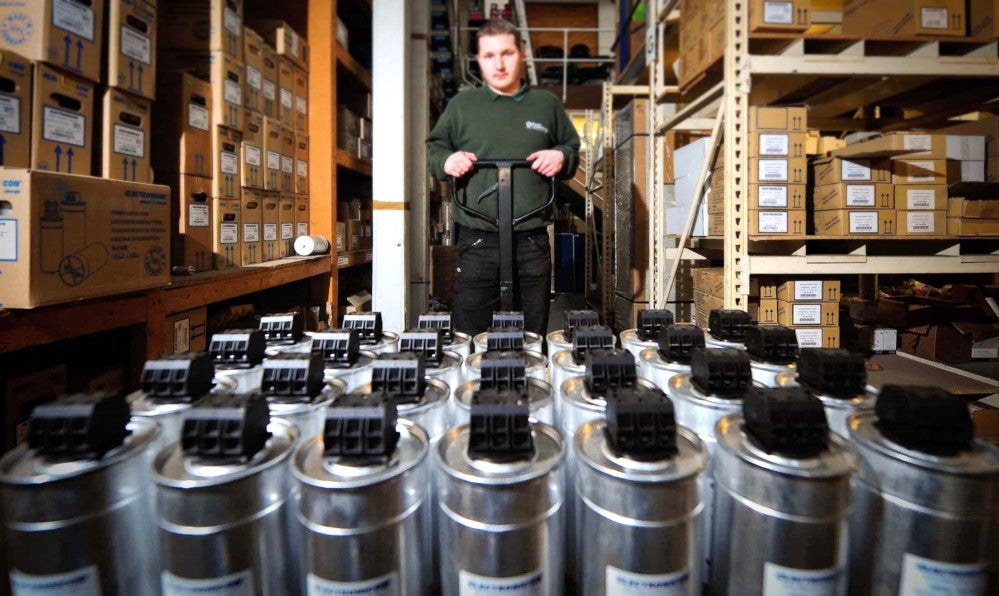
The distribution of European leasing activity has changed since the eurozone debt crisis broke out in 2008, with South European countries’ share in the continent’s total leasing volumes slashed, writes Sotiris Kanaris
Strict austerity measures, lack of liquidity and low demand for finance among businesses had a major impact on Greece, Spain, Italy and Portugal, with leasing volumes shrinking to a small portion of their pre-crisis totals.
As an effect of the bad market performance, a number of international lessors decided to exit some markets, while others merged, leaving behind a different financial landscape.
Leaseurope’s latest annual statistical survey showed that some of the Southern European leasing markets are recovering.
After years of decline, considerable growth in new leasing volumes was witnessed in Spain, Italy and Portugal in 2014, while the Greek market remained stable.
The composition of the markets has altered over the crisis period, with previously popular segments like real estate becoming less important and other segments becoming the principal drivers of growth.
Government policies, EU subsidies and ‘aggressive’ competition from banks are among the parameters that would play an important role in the revival of the leasing markets in these countries.

US Tariffs are shifting - will you react or anticipate?
Don’t let policy changes catch you off guard. Stay proactive with real-time data and expert analysis.
By GlobalDataSpain
The economic downturn had a significant impact on new leasing volumes across all segments of the market. According to data by Associación Española de Leasing y Renting, which does not include vehicle leasing, new leasing volumes plummeted from €21.54bn in 2007, to €4.68bn in 2013.
The construction industry, which strongly supported the growth of the Spanish economy for more than a decade, was significantly hit, with devastating effects on construction-related leasing activities. Health care equipment leasing was also heavily impacted by the adverse economic climate.
Alvaro Zafra, country manager of DLL Iberia and Athlon Car Lease, says: “Every activity related to construction came to a halt from one year to another, while the decrease in public expenditure significantly affected the health care leasing market. The equipment and automotive segments of the leasing market also shrank, but at a slower rate.”
Low business activity triggered the exit of local and international players, including ING Lease in 2012. Managing director at Deutsche Leasing Iberíca, Karsten Reinhard, tells Leasing Life that the crisis had impacted Spanish savings banks, with some alongside their leasing divisions ‘disappearing’.
Reinhard explains the reasons behind Deutsche Leasing’s decision not to exit the market, as well as the German lessor’s strategy.
“Spain is one of the most important economies in Europe. We decided to stay and realign our business. We diversified our activities by expanding into new sectors and built new relationships. It was a good decision not to exit the market, because it allowed us to make use of the crisis when competition was lower than today to position ourselves better in the market.”
The lessors who chose to remain in the market reorganised their businesses, influenced by the increased workload of certain departments.
Zafra says many lessors expanded their collection and recoveries team. He also mentions the rise in regulation and compliance demands as a consequence of the crisis forced lessors to strengthen those areas of business.
“I wouldn’t say that as a consequence of the crisis the lessors are much smaller than before,” Zafra says. “I might say that the composition of different departments changed or that the slowdown of the market facilitated increased efficiency of lessors’ back offices.”
Last year, Spain recorded a positive annual GDP growth for the first time since the beginning of the economic crisis, which caused an improvement in business confidence. In 2014, new leasing volumes in Spain reached €6.55bn, an increase of 39.92% year-on-year.
“Before the crisis, the Spanish banking system was highly leveraged; the loans to deposit ratio was well above 100%,” says Zafra. “Over the crisis the ratio declined and with the help of the European monetary institutions’ lending and strategy, there is an increased availability of liquidity.”
The automotive sector was cited by both Zafra and Reinhard as the sector which witnessed the highest growth due to the existence of government incentives and subsidies.
The scrappage scheme has been encouraging people to replace their vehicles, while a new government law that incentivises the leasing of environmentally friendly cars for companies’ fleets is expected to affect the market positively in the near future. Equipment leasing has also recorded an important increase.
Reinhard says he expects leasing volumes to go up slightly this year, but at a lower rate than the increase in overall investment in the economy, as competition from local banks has intensified.
Reinhard explains: “Recently local banks realised they have to regain their market share, so they decided to buy that share extremely aggressively. They are flooding the market with new loans to companies, deterring firms from entering into leasing contracts. Banks’ cheap pricing and aggressive lending is affecting the leasing market.”
Another way that the leasing market could be affected this year is by the upcoming elections, as businesses may hold back from investment in anticipation of the election result.
Despite the fact that recovery is under way, Zafra doesn’t expect leasing volumes to return to the high levels witnessed between 2006 and 2008.
He says: “The figures of 2006 to 2008 were incredible, but I don’t know to what extent those figures showed the reality of our country, given the size of our industry and our GDP. I would be expecting more to go to back to the levels of 2004-5, which is in my opinion a more realistic picture of the Spanish market. We’re still far from those levels, but I’m confident we can get there.”
Portugal
Portugal was under the supervision of the troika from 2011, when it signed a €78bn rescue package, until 2014. The austerity measures put in place by the government had an impact on the economy and business investment.
Eduardo Moradas, vice-president at the Associação Portuguesa de Leasing, Factoring e Renting (ALF), said that over these years national investment tumbled to levels “witnessed in the 90s”.
According to Moradas, financial leasing’s reactiveness to economic performance inevitably caused the decrease in volumes.
“Financial leasing is a product that anticipates economic shocks very quickly, due to its very close linkage with the ‘real economy’ and companies’ investment policies,” says Moradas. “When the crisis hit, financial leasing was already experiencing a decrease and now before better news for the national economy arose, we are witnessing strong leasing growth rates.”
Despite the severe drop in leasing volumes, there was very limited change in market competition.
“Portugal’s leasing market is dominated mainly by local banks and Spanish subsidiaries,” says Reinhard. “During the crisis lessors scaled down their activities, dismissed some people, adjusted their structure and attempted to solve their portfolio issues. However they remained in the market and continued to make business.”
All segments of the market were affected by the economic decline, with leasing of movable assets experiencing steep decreases.
On the other hand, the crisis offered some opportunities to the sector as companies seeking funding looked more extensively into all finance routes.
“The crisis also contributed to the growth of specialised financing, due to renewed interest by businesses in exploring and assessing all available options,” says Moradas. “In this assessment, financial leasing was clearly included and often chosen as the right finance.”
In 2014, new leasing volumes increased by 30.51% compared to the previous year showing that the market is recovering. Moradas says financial leasing grew at a higher rate than the total national investment rate.
According to data from the ALF, movable assets grew by 22.3% year-on-year in 2014 to €1.298bn. ‘Vehicles’ and ‘computers and office equipment’ have been increasing for two consecutive years and ‘machines and industrial equipment’ recovered in 2014. Real estate grew 29.7% year-on-year to €637m; ‘hotels and leisure’ was the segment that performed the best.
Moradas is confident that the leasing market will grow in 2015, but highlighted that the return to pre-crisis business volumes will not be immediate.
“Although it’s always hard to predict the future, with some level of confidence we’re expecting growth rates to remain strong in 2015 for leasing of movable assets, whereas real estate leasing is not expected to grow,” Moradas says, adding: “This crisis changed financing and investment paradigms and nothing will be as it once was. It will take quite a few years to reach pre-crisis levels, of course highly dependent on the evolution of the economy.”
European subsidies are going to play a major role in the recovery of the Portuguese economy. The country is in a new European funding period called Portugal 2020, which started in 2014 and will last until 2020.
Moradas says: “There’s a renewed boost in investment projects, which we hope financial leasing will be able to help come to fruition. There’s a big emphasis and incentives for exporting companies and start-ups.”
However, Reinhard doesn’t anticipate that EU subsidy programmes will cause a significant increase in leasing penetration.
He says: “If you want to apply for subsidies, the company needs to be an owner of the equipment. You can only be an owner if you finance this via loan.
“There will be a lot of investment that will not be reflected in the leasing segment, therefore penetration of leasing will not increase significantly.”
Italy
As Italy continues to experience negative growth, the reluctance and inability of some Italian businesses to make investments has dampened demand for finance products.
“Nowadays, annual total new leasing business is around one third of 2007 levels,” says Gianluca De Candia, general director at Associazione Italiana Leasing (Assilea).
The real estate segment of the leasing market was the one most affected by the financial crisis. According to De Candia, before the crisis around 50% – nearly €25bn – of annual new leasing business financed real estate investment. It declined for seven consecutive years, before increasing by 38% year-on-year in 2014 to €4bn, accounting for 25.5% of total Italian new leasing business.
Over the same period there was a decline in the use of leasing across all asset categories. However some alternative forms of leasing became more popular, for example operating leasing increased its market share in the equipment leasing segment.
After 2007, competition in the Italian market changed, although it remains primarily dominated by the 10 largest companies.
De Candia says: “In the last seven years, a quarter of leasing companies merged or left the market. The top companies’ market share in 2014 is very similar to the one observed in 2007-8 – above 65% for the ‘top 10′.
“In addition, new leasing companies entered the market and increased their market share at the expense of smaller lessors.”
Foreign leasing companies managed to capture a greater market share during the crisis, with some reaching top positions in the ranking statistics.
According to Assilea, foreign lessors increased their total market share from 26.9% in 2008 to 43.2% in 2014.
Despite the stagnation in the Italian economy witnessed last year, Leaseurope’s data -which combine data from Assilea and Associazione Nazionale Industria dell’Autonoleggio e Servizi Automobilistici (ANIASA) – showed that new leasing volumes in Italy grew by 11.62% compared to 2013 at €18.028bn.
“In 2014, the leasing market’s share of the total long-term banking financing to business investments rose to around 30%, indicating a better performance of that product compared to traditional loans,” says De Candia.
De Candia attributes the high level of growth of the Italian leasing market to the introduction of tax simplifications in the treatment of leasing contracts, which stirred demand for this financial product.
In 2014 all the main segments of the Italian leasing market saw an increase in new business volumes, apart from leasing to renewable energy plants which was affected by the end of government incentives.
Assilea’s statistics showed that the automotive sector’s volumes increased by 10.4% in 2014, compared to 2013, with good performances in all segments apart from industrial vehicles. In addition, the equipment sector saw an 8.8% increase in the number of contracts and 5.4% increase in volumes in 2014 compared to 2013.
De Candia is optimistic that the positive trend in new leasing volumes observed in 2014 will continue in 2015, as in the first half of the year leasing volumes increased by 8.9% compared to the same period last year. The automotive and equipment leasing sector are driving the growth.
“The expectations are that €17bn worth of contracts will be signed in 2015, 6.5% more than 2014,” says De Candia. “The performance of the first half of the year was higher than expected.”
The increase in business confidence was also cited as a reason behind the expected growth in leasing volumes, with government incentives contributing to the rise.
De Candia concludes: “Business confidence is improving. Government incentives to SMEs’ equipment investments, for example the Nuova Sabatini law, supported the finance of more than €1bn of new investments in one year. One-third of this was financed with leasing contracts.”
Greece
“The effect of the economic crisis on the Greek leasing market was devastating,” says Yiannis Mavrelos, chairman of the Association of Greek Leasing Companies (AGLC).
“The crisis started affecting Greece in 2008, but the really ruinous consequences were witnessed after 2010. New business volumes have shrunk to less than 10% of their 2007 volumes.”
According to AGLC statistics, in 2007 new leasing volumes were at an all-time high of €2.87bn. After years of decline, in 2014 they stood at just €213.4m.
Like Spain and Italy, the commercial real estate market was the strongest leasing segment in the market before the crisis. The collapse of the property market resulted in the plunge in total leasing volumes.
In addition, the medical equipment leasing market shrank, due to the impact of the crisis on the private medical market in Greece and reduced government investment.
Competition in the Greek leasing market has completely transformed as a consequence of the economic downturn. In 2007 there were 14 lessors operating in the market; currently there are six.
“In such a business environment competition changes character, and management’s aim focuses on survival,” says Mavrelos. “As a matter of fact, some companies went into liquidation while most of the others followed the fate of their parent banks, merged or were acquired by stronger players.”
The remaining companies had to undergo reorganisation in order to reduce expenses, Mavrelos explains. “Lessors followed the drop in demand by reduced spending and personnel. They reorganised the companies internally taking people from the business development side and re-educated them to operate in business recovery units and physical asset management.”
Despite the significant decrease in new business volumes, the value of capital outstanding remained strong. In 2007 capital outstanding was €7.93bn while in 2014 it was €5.48bn.
Mavrelos explains: “Although there are very limited new business volumes, the capital outstanding remains high because older commercial real estate contracts were long, maturing in 15, 25 or 30 years.
There’s an existing portfolio that was built in the past that continues to exist and generate income, therefore the leasing companies can survive without doing new business for a long time living off an old portfolio.”
Greek leasing companies have accumulated significant portfolios of repossessed commercial property office space, stores, warehouses and hotels that they are renting.
Mavrelos says: “As market conditions are not appropriate for selling these properties, lessors prefer to rent them out under operating lease schemes.”
He added that there’s strong activity in remarketing and selling repossessed commercial vehicles, yellow equipment and machinery, mainly outside Greece.
This year the uncertainty about the result of negotiations with the Greece’s eurozone partners, along with the capital controls, had an adverse effect on the economy and the leasing sector.
Mavrelos expects leasing business will remain unchanged at the current “minimum mode of operation”.
He says there’s some leasing activity with large Greek companies, mainly export-orientated firms, as well as in the tourist sector, such as the leasing of buses as well as hotel equipment.
Mavrelos says that after Greece’s new loan deal was agreed there were signs of increased business confidence about the future of the economy, which could boost investment and leasing activity in the near future.







